Drosera linearis (Linear-leaved Sundew) - photos and description
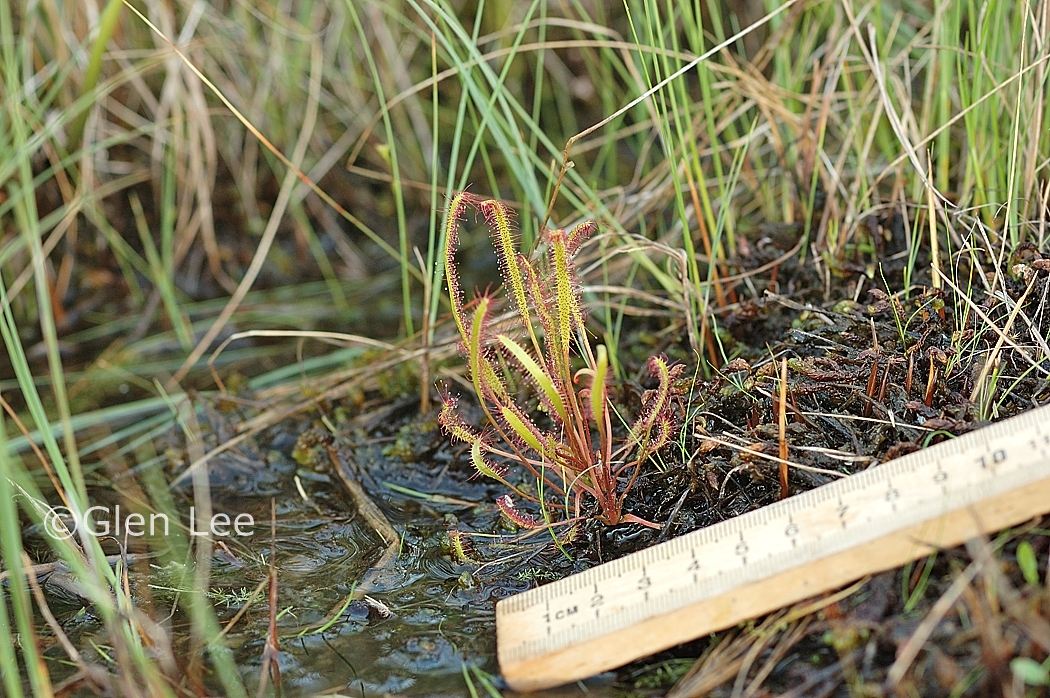
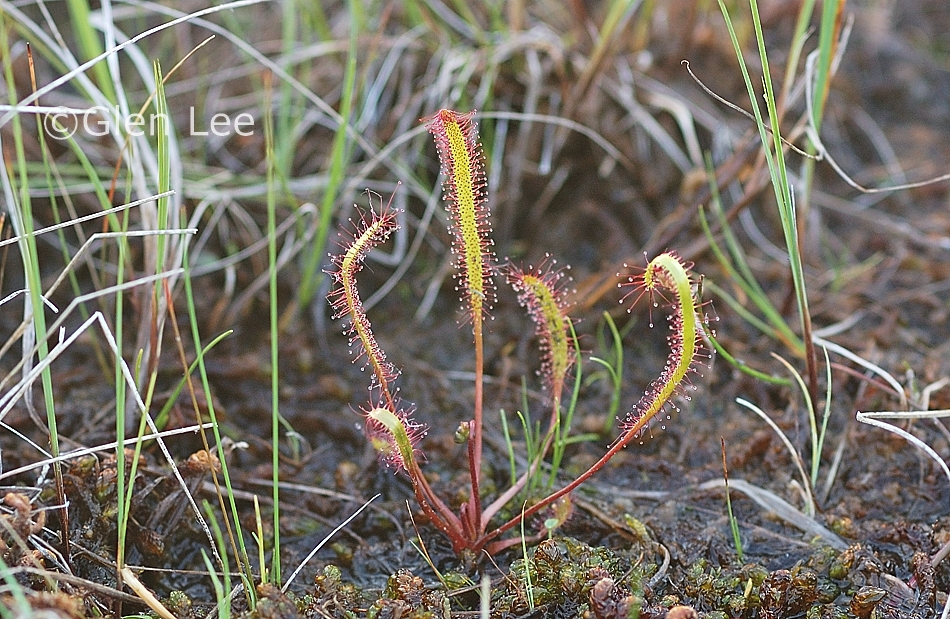
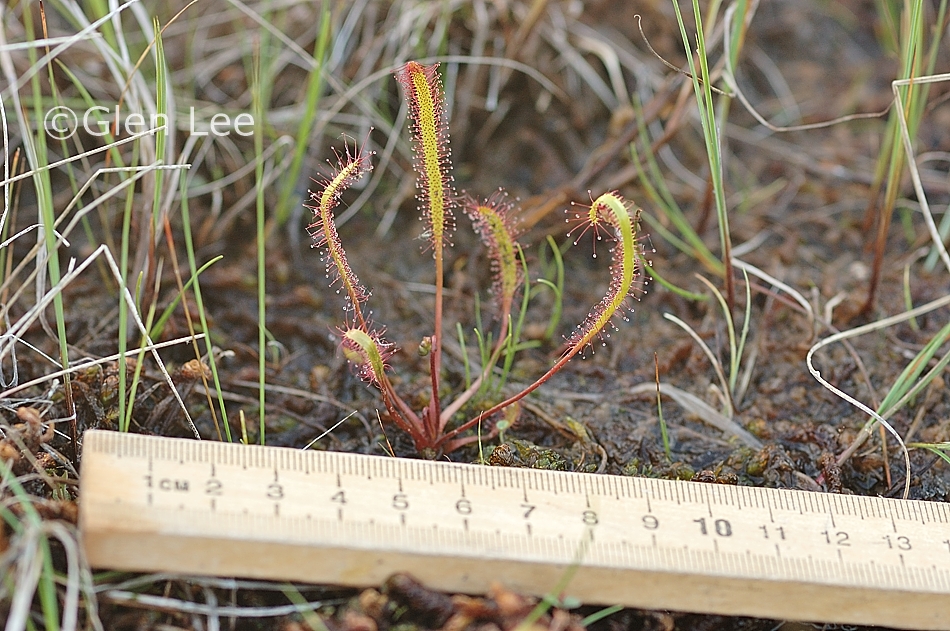
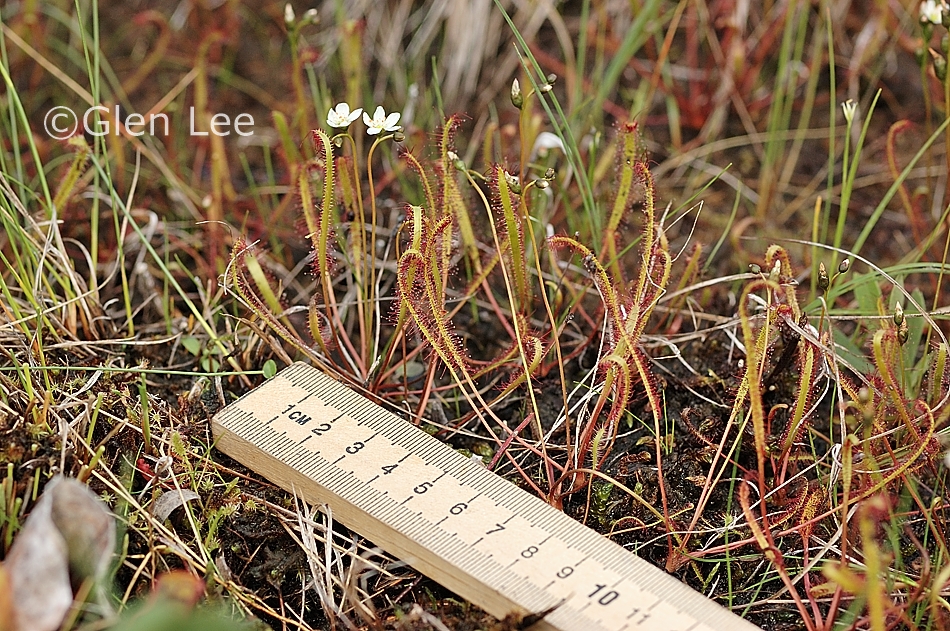
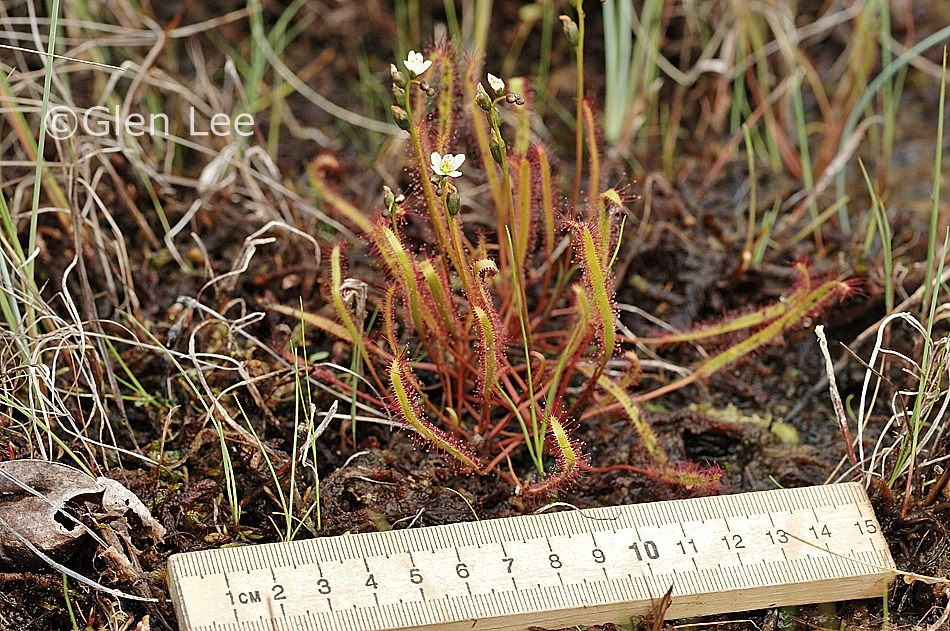
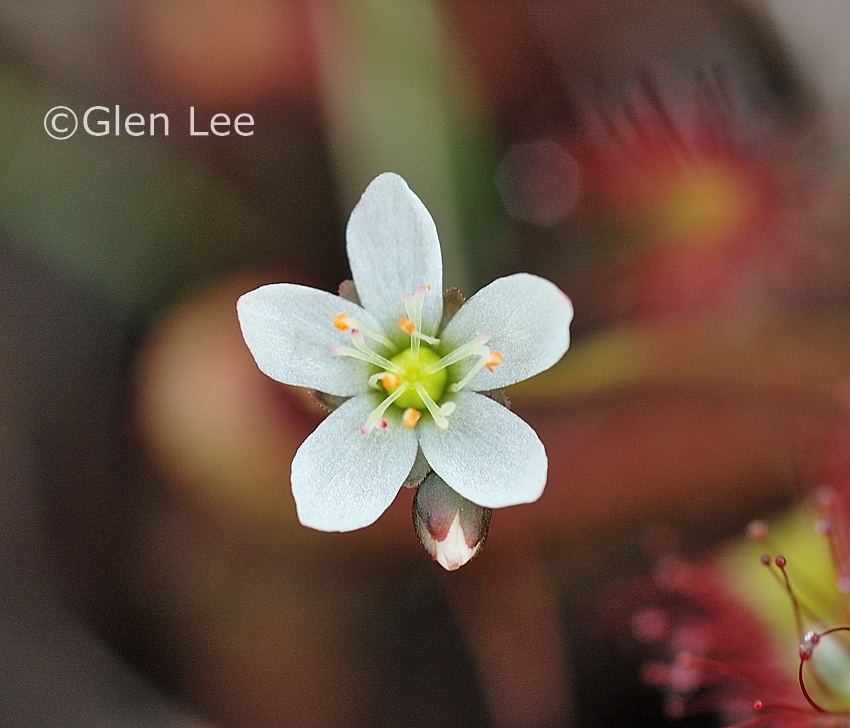
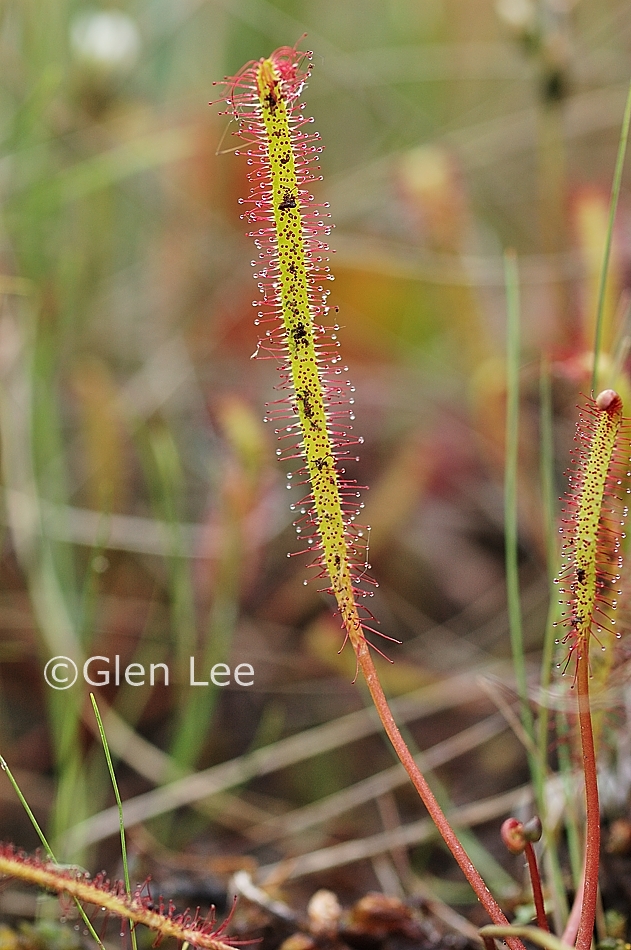
Origin: Native.
General: Tiny insectivorous plant, leaves growing from a central rosette.
Flowers: Small white flowers in cymes born on a
leafless scape. Flowers measured to 10 mm in diameter.
The plants eat small insects to provide them with the nitrogen which is
lacking where it lives. When an insect becomes entangled in the hairs,
the leaves bend inwards so that the insect comes into contact with fine,
inner hairs. Enzymes are produced by the hairs which dissolve the insect
which is then absorbed by the leaf. Only the insect's exoskeleton
remains which blows away when the leaf hairs uncurl to become erect
again, ready for the next meal.
Leaves: Leaves linear, the longest leaf blade I could find was measured at 55 mm long and 2 mm wide. Each leaf with glandular hairs, the hairs exuding a sticky drop at their tip.
Height: Height listed in Budd's Flora to 10 cm, I measured scapes to 10 cm high.
Habitat: Very wet pitcher plant bogs in the boreal forest, often on the edges of small muddy pools.
Abundance: Rare, ranked as an S3 (as of 2021) by the Saskatchewan Conservation Data Centre.
Similar species: There are 3 species of Drosera
native to the province, they can be distinguished by the shape of their
leaves:
- Drosera rotundifolia
has leaves that are more or less orbicular, this plant is common.
- Drosera anglica has
leaves that are oblong, this plant is rare.
- Drosera linearis
has leaves that are linear, this plant is extremely rare.
When and where photographed: Photos taken June 24, and July 13th, very wet bog, boreal forest, 400 km north east of our home in Regina, SK.